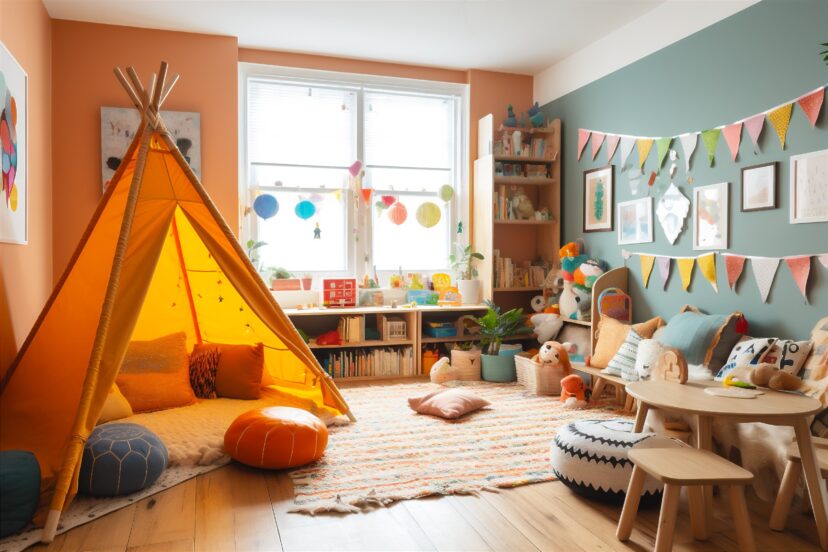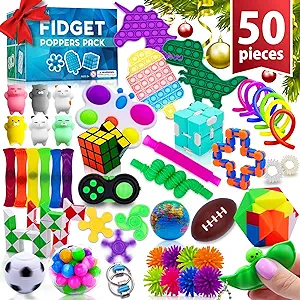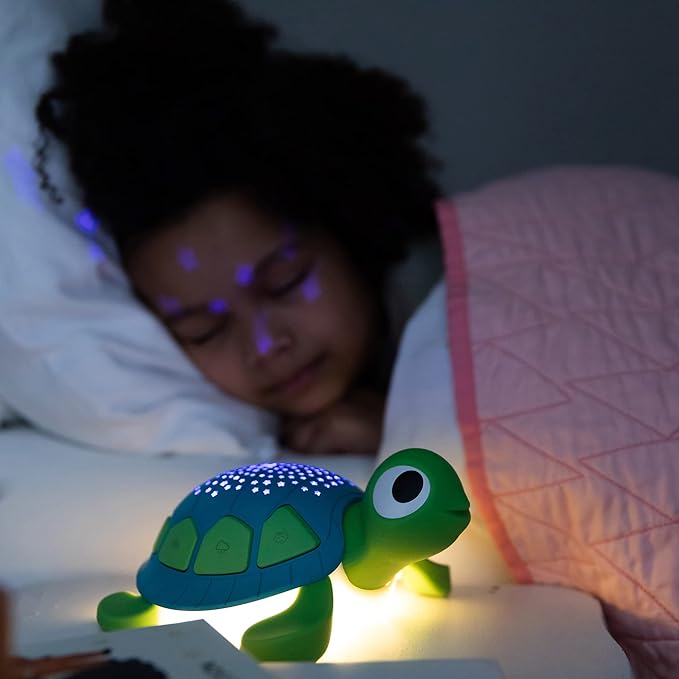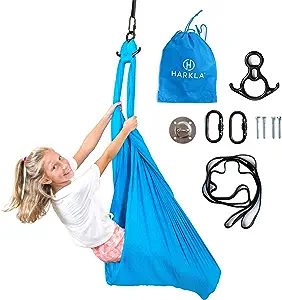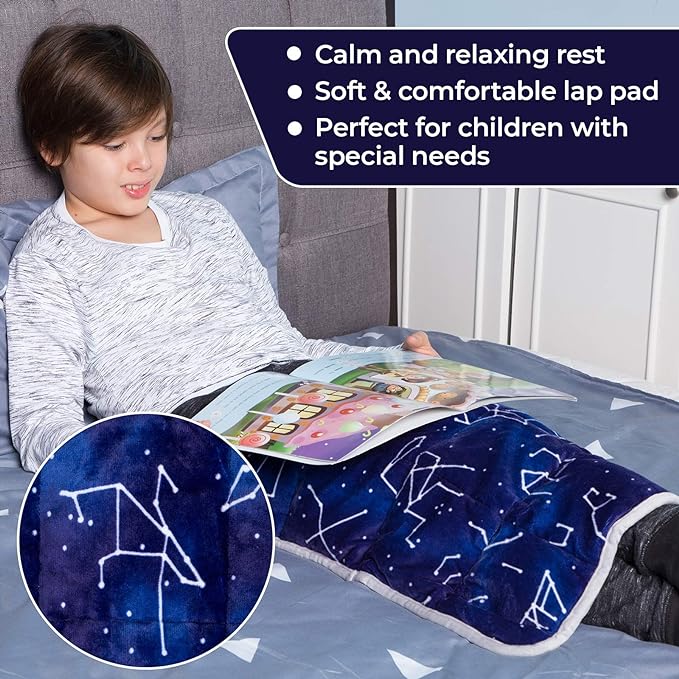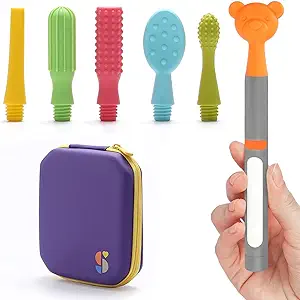Sensory Breaks Unleashed: A Deep Dive into Enhancing Child Development
I am passionate about exploring the complex world of child development, where every small detail plays a crucial role in shaping a child’s growth. In this crowded space filled with various tools and methods, I got really interested in sensory breaks. Although it sounds simple, sensory breaks offer deep insights and many opportunities for enhancing a child’s growth.
So, what makes sensory breaks so special? What changes and benefits can they bring to a child’s life? Come along with me as we look beyond the usual and uncover how sensory breaks are more than just a helpful tool – they’re a way to deeply celebrate and improve every aspect of child development.
What are Sensory Breaks?
A sensory break is essentially a designated interlude, an oasis of calm amidst the bustle, where children can indulge in activities specifically engineered to cater to their sensory needs. It is akin to a refresh button; not just an escape, but a profound journey back to the self, a reconnection that aligns, balances, and rejuvenates the sensory system.
Key Components Of Sensory Breaks
Sensory breaks are special and varied, designed to meet the different needs of every child. Each break is filled with specific activities, not one-size-fits-all but personalized, just like every child is unique.
These activities help calm kids when they’re upset, energize them when they’re feeling low, and offer learning and growth when possible. For example, the comforting feel of a weighted blanket can calm a child, the exciting beat of a drum can uplift their spirits, and the colorful world inside a sensory bin can help them explore and learn. Each part of a sensory break helps in its own unique way.
The Importance of Sensory Breaks
How often do we overlook the value found in taking a break? Amidst our busy lives, the quiet moments, those pauses we sometimes take for granted, hold significant power, especially for a child’s development. Sensory breaks serve as these vital pauses, offering kids a chance to reset, recharge, and thrive.
Physical Benefits Of Sensory Breaks
Sensory breaks provide children tangible, noticeable physical advantages. Imagine a child getting the opportunity to pause, engage in activities that cater to their sensory needs, and emerge with improved control over their bodies. These breaks enhance motor skills, leading to better coordination and movement. Anxiety, a common challenge for many kids, is significantly reduced. Through activities that calm and soothe, children find their anxiety levels dropping, resulting in a more peaceful and relaxed state.
Focus is another area where sensory breaks shine. By offering kids a chance to step back and engage in sensory activities, their concentration improves. They can pay attention for longer periods and are less easily distracted, making learning and engagement with their environment more effective.
Mental Benefits Of Sensory Breaks
On the mental health front, sensory breaks are equally impactful. They build resilience, helping children cope with challenges and bounce back from setbacks more easily. Every activity during a sensory break is a step towards making a child mentally stronger and more adaptable.
Creativity gets a boost as well. When kids take part in different sensory experiences, their imaginative thinking expands. They think outside the box, come up with new ideas, and express themselves more freely.
Lastly, the overall well-being of a child is enhanced. These breaks contribute to a balanced mental state, where kids feel good about themselves and their surroundings. It’s about creating an environment where children not only grow but flourish. Each sensory break contributes to making them feel more grounded, balanced, and ready to face the world around them with confidence.
Tools To Help With Sensory Breaks
There’s a variety of tools available for sensory breaks. Each tool plays a role in making sensory experiences rich and beneficial for the child. I have highligted some of the most common ones below.
Fidget Tools
Fidget tools help in stress reduction and focus enhancement. They provide a means for physical and emotional relief by alleviating anxiety and releasing built-up energy.
Individuals, especially those with ADHD or on the autism spectrum, can experience improved concentration and sensory integration. The tactile stimulation offered by fidget tools supports self-regulation, assisting users in maintaining attention and emotional balance during tasks.
Visual Aids
Visual aids can be instrumental during sensory breaks by offering a calming and focus-enhancing effect. For children who are overwhelmed by their environment, visual aids such as Kaleidoscopes, colored filters, or liquid motion bubblers provide a point of focus, diverting attention from sensory overstimulation.
They aid in reducing anxiety and stress by engaging the visual sense in a controlled and soothing manner, supporting relaxation and mental recentering
Tactile Exploration
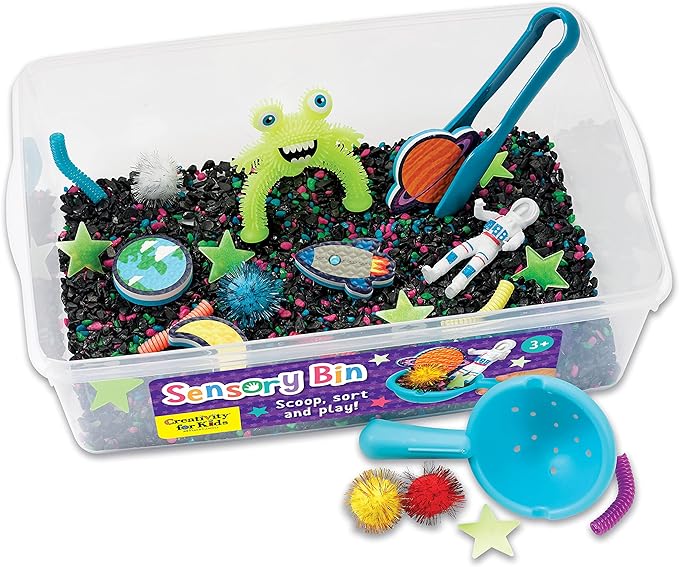
Tactile exploration during sensory breaks facilitates relaxation and self-regulation by engaging the sense of touch in a focused, deliberate manner. Interacting with different textures such as play doh and other similar materials can alleviate anxiety and stress by redirecting the individual’s focus away from overwhelming stimuli.
One common tool is a sensory bin which encourage hands-on exploration and can be enhanced with additional elements like toys or objects to find and sort.
Auditory Stimulation
Auditory stimulation can be highly effective during sensory breaks for promoting relaxation and focus. Sounds like soft music, nature sounds, or white noise can offer auditory reprieve from an otherwise noisy and overstimulating environment.
For individuals who may be sensitive to or overwhelmed by auditory stimuli, controlled and calming sounds can help regulate mood, reduce anxiety, and improve concentration.
Movement Activities
Movement activities are beneficial for sensory breaks as they offer a constructive outlet for releasing pent-up energy and stress. Engaging in physical actions like yoga, jumping on a trampoline, or swinging on a sensory swing can stimulate the proprioceptive and vestibular systems, aiding in body awareness and balance.
For children who feel overstimulated or anxious, movement can provide immediate relief, helping to reset the nervous system, improve mood, and enhance focus.
Weighted Tools
Weighted tools, like blankets, vests, or lap pads, can be beneficial for sensory breaks by providing deep pressure stimulation. This form of tactile sensory input can induce a calming effect, reducing anxiety and helping to manage sensory overload.
The added weight aids in enhancing body awareness and grounding individuals who may feel overwhelmed, offering comfort and security.
Oral Motor Tools
Oral motor tools are effective during sensory breaks for individuals who seek oral sensory input. Chewing or biting on these tools can offer a calming and focusing effect, particularly for those with ADHD, autism, or sensory processing disorders.
They assist in reducing anxiety, managing stress, and increasing concentration by offering a safe and appropriate means to satisfy the need for oral stimulation. This can ultimately enhance self-regulation, attention, and overall sensory integration, contributing to a more balanced and focused state.
Olfactory Stimulation:
For children, olfactory stimulation can be a fun and effective element of sensory breaks. Introducing children to different, pleasant scents can help them in self-regulation, reducing anxiety, and increasing focus. Scented playdough or slime engages the sense of smell and touch simultaneously, while calming scents like lavender can assist in relaxation.
By associating specific fragrances with relaxation and focus, children can be guided towards a balanced sensory state, making the management of stress and sensory overload an engaging and multisensory experience.
How To Implement Sensory Breaks
Making sensory breaks a part of daily life is the key. It’s about blending them naturally into a child’s routine, so they become a regular and beneficial practice.
At Home
Implementing sensory breaks at home starts with identifying the child’s specific sensory needs through observation or consultation with professionals. Create a quiet, dedicated space in the home equipped with customized tools and activities tailored to the child’s preferences. I have written an artcile on Calm Down Corners which might help. Incorporate a variety of options, such as fidget spinners or textured materials, and establish a routine to integrate sensory breaks seamlessly into the child’s daily life, offering consistency yet flexibility.
Involve the child by providing choices and observe their reactions to adjust the activities as needed. Sensory breaks should be a dynamic practice, adapting to the evolving needs of the child to ensure effectiveness. If needed, seek support from community resources or professionals for additional insights to optimize these breaks, ensuring they effectively contribute to the child’s overall development and well-being.
In School
Implementing sensory breaks in schools involves structured planning and collaboration. Begin by identifying the diverse sensory needs of students, possibly with the assistance of an occupational therapist or specialist. Create specific zones within the school environment dedicated to sensory breaks, ensuring they are safe, quiet, and equipped with a variety of sensory tools and activities tailored to cater to a range of sensory preferences.
Incorporate sensory breaks into the students’ schedule, allowing regular intervals for students to engage in sensory activities that help them to refocus, relax, or energize. Ensure teachers and staff are trained to observe and understand students’ responses to different sensory stimuli, allowing for adjustments to be made to the activities offered.
Flexibility and adaptability are crucial; be ready to modify the approach to meet the evolving sensory needs of the students effectively. Collaborate with parents and professionals to enhance the effectiveness of sensory breaks, ensuring each student’s unique needs are met, and their learning experience is optimized.
Be Mindful of Overdependence & Misidentification
There’s can be a risk of children becoming too dependent on sensory breaks. It’s crucial to strike a balance, ensuring that children don’t rely solely on these breaks but also engage in other forms of learning and development. Another challenge is misunderstanding the child’s needs. It’s essential to correctly identify what each child needs to ensure that the sensory activities provided are genuinely beneficial and not just a superficial fix.
Final Words From Me
There is no doubt that sensory breaks play a big part in helping our children grow in a balanced way. These breaks, when done right at home or school, do more than just meet their immediate needs. They help build strong foundations for their future learning and growth.
Sensory breaks are about exploring and learning, where each experience helps your child become more balanced and focused. By including these breaks in their routines, we’re opening up opportunities for them to learn and grow without limits. It’s a step towards helping your children learn better today and also preparing them to be creative and strong-minded adults.
FAQs
What age is appropriate for sensory breaks?
Every child is unique. Sensory breaks can be tailored to meet the needs of children at different developmental stages.
Can adults benefit from a sensory break?
Absolutely, adults too have sensory processing needs and can reap significant benefits.
How long should a sensory break last?
Typically, a few minutes to 20 minutes, depending on the child’s needs and the activities involved.
How can I implement sensory breaks at home?
Start with identifying your child’s sensory needs, then integrate suitable activities into their daily routine.
Are there professionals who can help with creating sensory breaks?
Yes, occupational therapists are skilled in creating and implementing effective sensory breaks tailored to individual needs.

